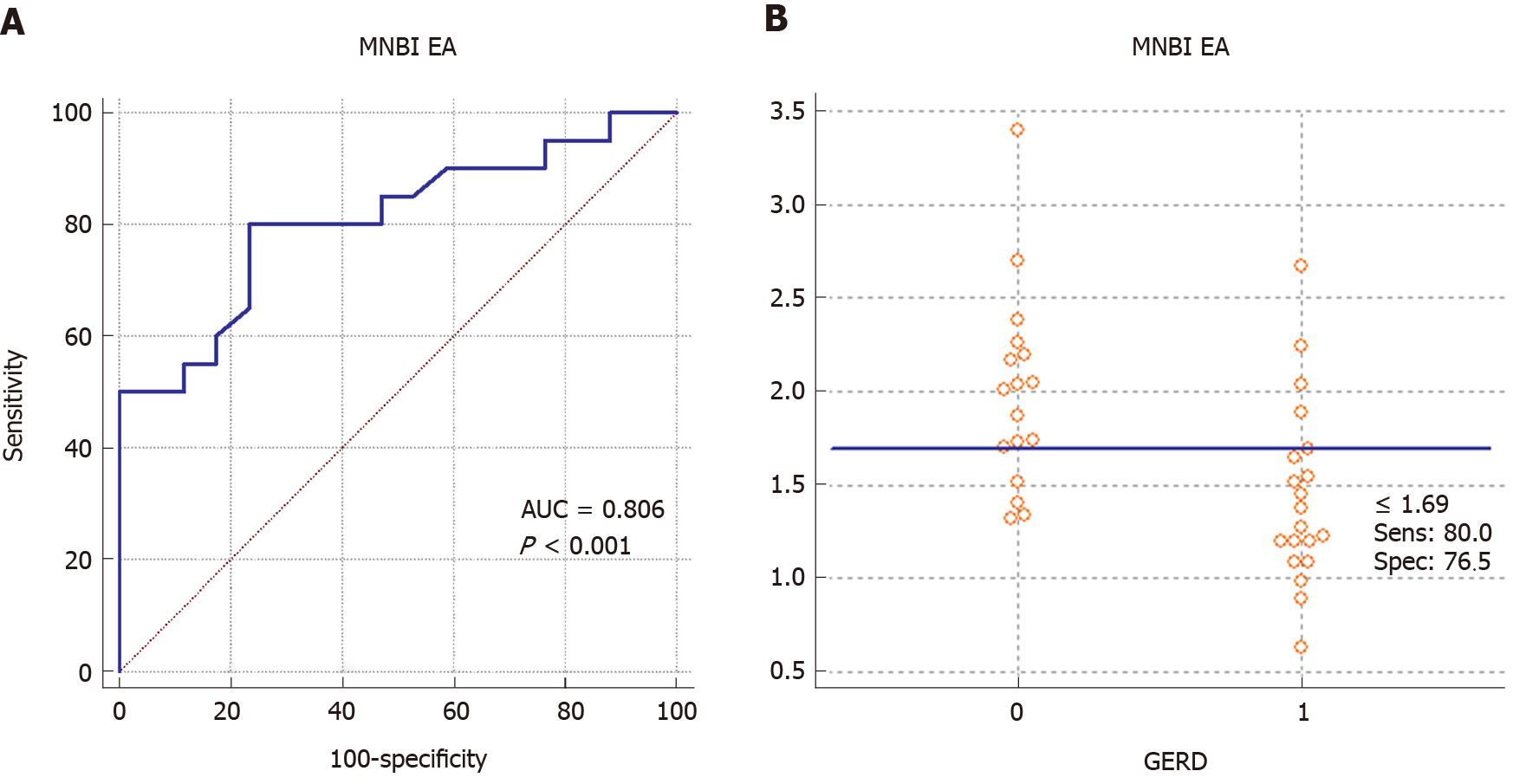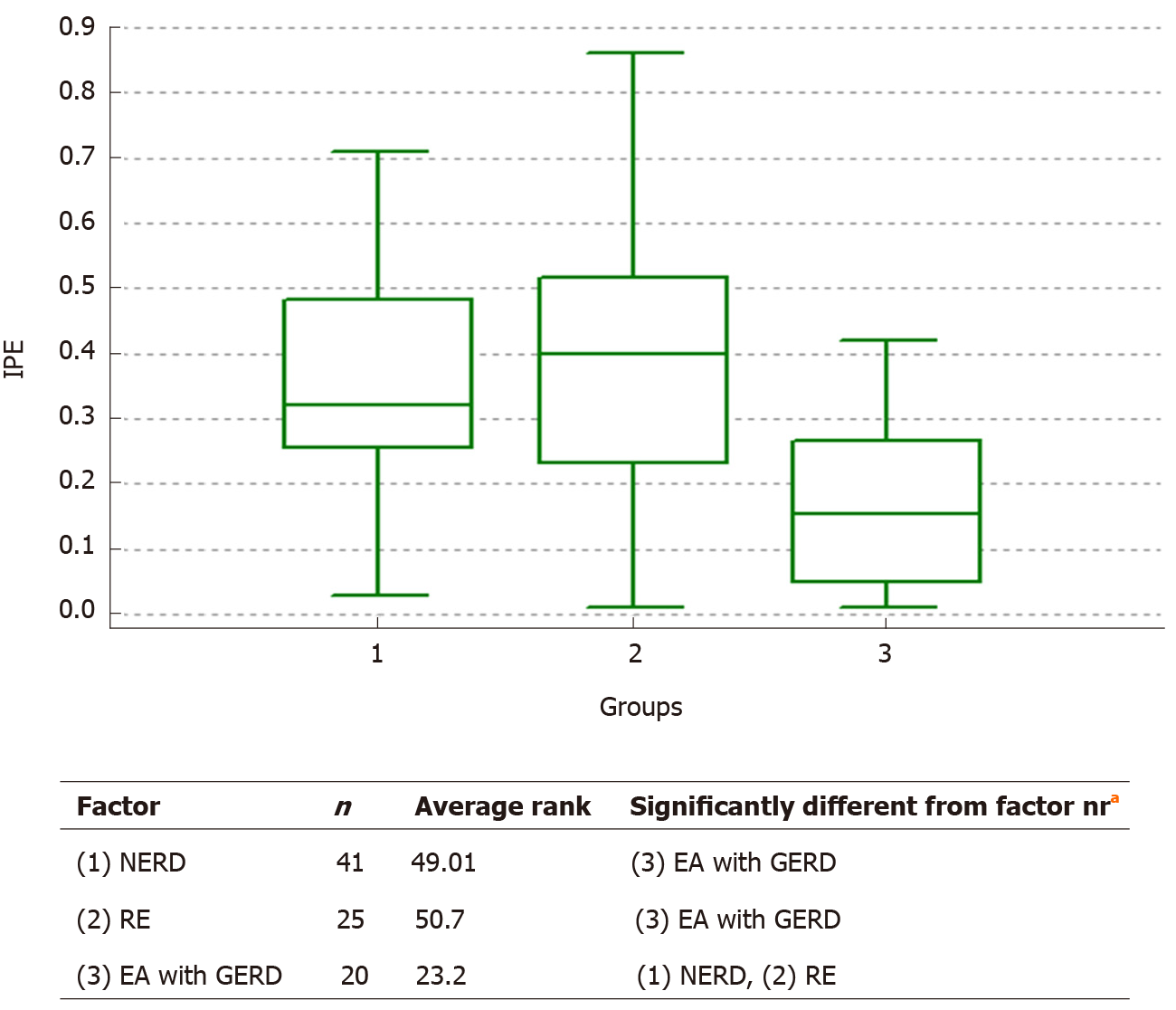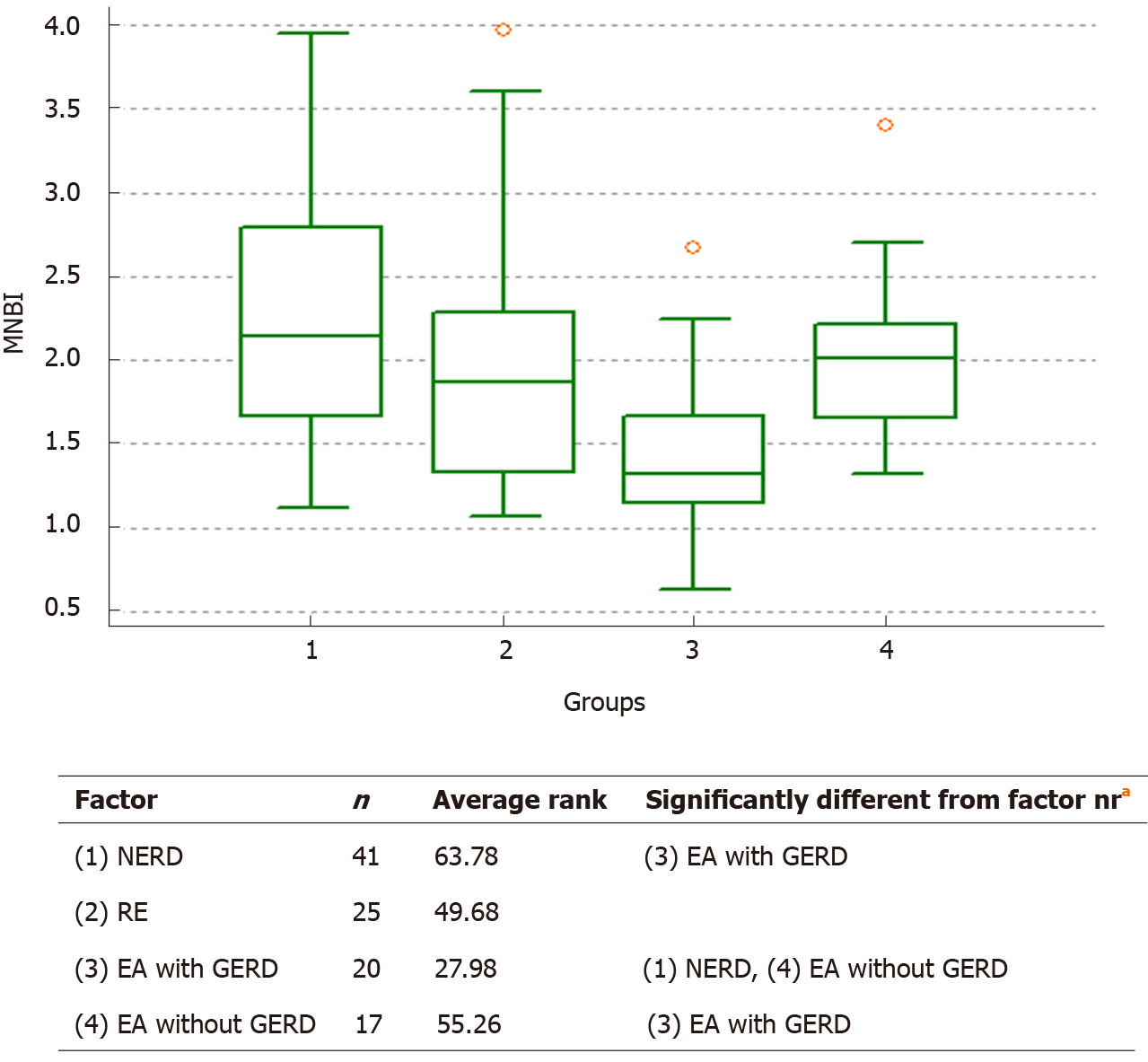Copyright
©The Author(s) 2020 Published by Baishideng Publishing Group Inc.
World J Clin Pediatr. Sep 19, 2020; 9(2): 29-43
Published online Sep 19, 2020. doi: 10.5409/wjcp.v9.i2.29
Published online Sep 19, 2020. doi: 10.5409/wjcp.v9.i2.29
Figure 1 Differences in distal mean nocturnal baseline impedance values (kOhm) among the esophageal atresia study groups.
Study groups are EA with GERD and EA without GERD. P = 0.0024 by t-test (assuming equal variances). EA: Esophageal atresia; GERD: Gastroesophageal reflux disease.
Figure 2 Mean nocturnal baseline impedance capabilities for gastroesophageal reflux disease diagnosis in patients with esophageal atresia.
A: Area under the curve is 0.806, with P < 0.001; B: Diagnostic cut-off is 1.69 kOhm, with sensitivity of 80.0% and specificity of 76.5%. EA: Esophageal atresia; GERD: Gastroesophageal reflux disease; MNBI: Mean nocturnal baseline impedance.
Figure 3 Kruskal-Wallis test (P < 0.
001) with post hoc analysis (Dunn’s test) of index of proximal events in study groups. Study groups are: (1) NERD; (2) RE; (3) EA with GERD. aP < 0.05. nr: MedCalc numbers the factors. In the output you see a list of factors, with factor label, n and average rank. The factor label is preceded with a number between brackets. The "nr" in "Different (P < 0.05) from factor nr" refers to that number. NERD: Nonerosive reflux disease; RE: Reflux esophagitis; EA: Esophageal atresia; GERD: Gastroesophageal reflux disease.
Figure 4 Kruskal-Wallis test (P < 0.
001) with post hoc analysis (Dunn’s test) of mean nocturnal baseline impedance data in the study groups. Study groups are: (1) NERD; (2) RE; (3) EA with GERD; (4) EA without GERD. aP < 0.05. nr: MedCalc numbers the factors. In the output you see a list of factors, with factor label, n and average rank. The factor label is preceded with a number between brackets. The "nr" in "Different (P < 0.05) from factor nr" refers to that number. NERD: Nonerosive reflux disease; RE: Reflux esophagitis; EA: Esophageal atresia; GERD: Gastroesophageal reflux disease.
- Citation: Aksionchyk M, Marakhouski K, Svirsky A. Gastroesophageal reflux disease in pediatric esophageal atresia: Assessment of clinical symptoms and pH-impedance data. World J Clin Pediatr 2020; 9(2): 29-43
- URL: https://www.wjgnet.com/2219-2808/full/v9/i2/29.htm
- DOI: https://dx.doi.org/10.5409/wjcp.v9.i2.29












